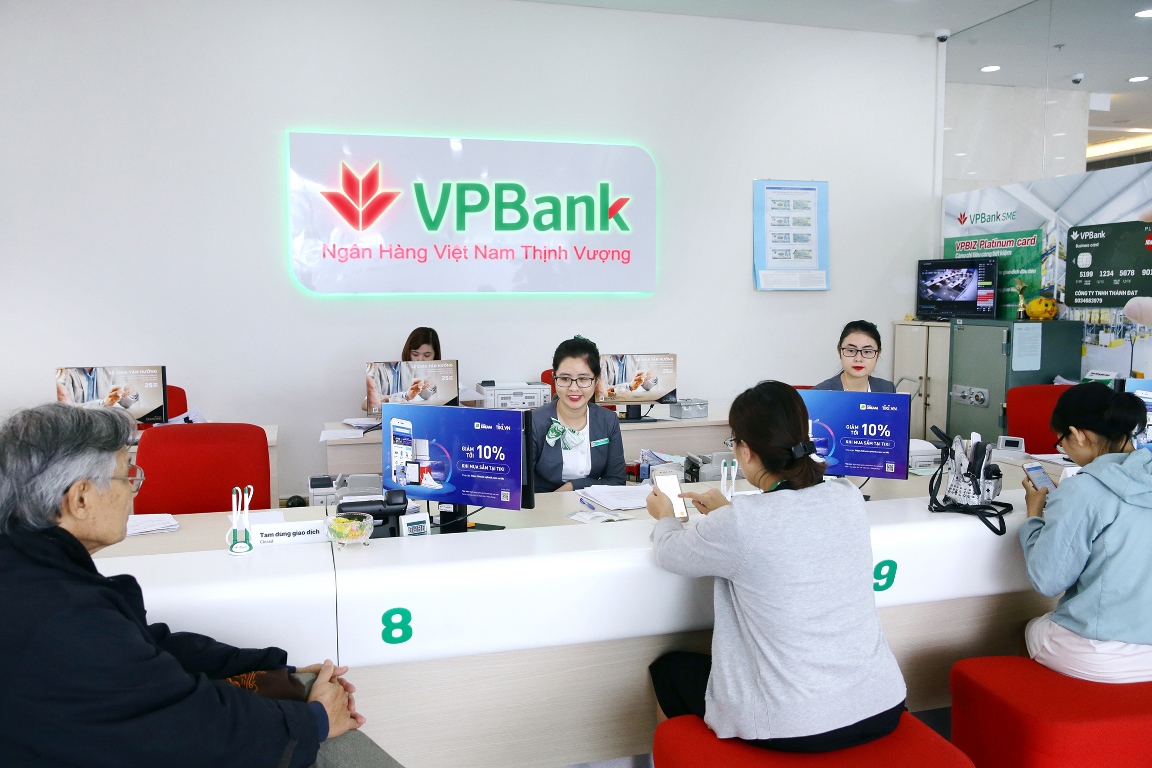VPBank diversifies its loan portfolio to avoid risks
 |
| VPBank's loan portfolio is allocated evenly and without the risk of concentration on any specific sector or customer group |
Nguyen Duc Vinh, CEO of VPBank, said that the bank diversifies its personal loan portfolio across many sectors, without reliance on any specific sector or major partners. In particular, 29 per cent of its outstanding loan balance is for real estate, 15 per cent for car loans, and 14 per cent for business activities. Meanwhile, unsecured finance products, which is one of VPBank's strengths, account for only 25 per cent. The rest is outstanding loans for other financial products.
Some banks in the market focus on offering loans for the purchase of real estate and cars. However, this can pose a threat to the bank’s activities.
“VPBank is one of the few banks with wide customer coverage and reach. Our loan portfolio is balanced without dependence on any group of customers or market. This gives VPBank peace of mind to pursue sustainable development,” Vinh stressed at a recent meeting with stock market analysts.
The diversity allows VPBank to reach a very large number of customers in the market. VPBank leaders said that the parent bank, serving the middle and high-end customer segments, has recorded more than 4 million transactions. Meanwhile, FE Credit serves a customer base of more than 10 million people, especially the low-income segment with difficult access to banking services. There are not many banks in the market targeting this underpenetrated segment.
In addition, the bank also builds and designs highly specialised products for small groups. For example, Comcredit loan packages are aimed at business households while SME loan packages are built for small- and medium-sized enterprises (SMEs) with focus on upper-SMEs and micro-SMEs.
VPBank is also leading in the number of cards issued in the market. According to VPBank’s CEO, VPBank was one of the few banks in the market with top average spending via cards, accounting for 19 per cent of total card spending in the market. Meanwhile, FE Credit has also issued the highest number of cards in the market. Along with FE Credit, the bank system make up for 25 per cent of total spending via cards.
After three quarters of 2019, VPBank's credit outstanding loans increased by 14.7 per cent to VND264.76 trillion ($11.5 million). Total assets reached VND358.24 trillion ($15.58 million), an increase of 11 per cent against the beginning of the year.
The bank reported a pre-tax profit of VND7.19 trillion ($312.61 million), equivalent to 76 per cent of the 2019 plan. The bank also posted an after-tax profit of VND5.75 trillion ($250 million), up 17 per cent and bring the EPS (earning per share) to VND2,342 (10 US cents).
Recently, the bank has been restructuring its activities to support customers. It focuses on maintaining and developing a high-quality customer base instead of seeking new customers like in the previous years.
Vinh said that this year 60-70 per cent of loans are disbursed to existing customers so as to reduce risk and costs while improving efficiency. The bank will continue to promote and maintain this customer base. To expand the customer base, the bank will focus on digital channels with an emphasis on automation, thereby saving time and cost. This is part of the bank’s digital strategy to team up with other financial companies, fintech startups, and external partners.
What the stars mean:
★ Poor ★ ★ Promising ★★★ Good ★★★★ Very good ★★★★★ Exceptional
Related Contents
Latest News
More News
- Tax sector wraps up 2025 and sets priorities for next year (December 25, 2025 | 14:00)
- A tipping point for digital and hybrid wealth management in Vietnam (December 23, 2025 | 13:33)
- $250 million deal targets women-owned SMEs, sustainable agriculture (December 22, 2025 | 17:40)
- Stock market posts resilient 2025 performance (December 19, 2025 | 18:17)
- Citi Vietnam receives 2025 AmCham CSR recognition (December 19, 2025 | 16:35)
- As global green supply chain reshapes, will Vietnam be left behind? (December 19, 2025 | 08:00)
- Banks gear up for massive capital increases (December 18, 2025 | 17:04)
- Securing capital and efficiency for Vietnam’s 2026-2030 growth ambitions (December 17, 2025 | 10:00)
- Energy sector in need of blended finance mechanisms (December 17, 2025 | 09:00)
- Vietnam still has room to mobilise capital for sustainable growth (December 17, 2025 | 08:57)

 Tag:
Tag:





















 Mobile Version
Mobile Version